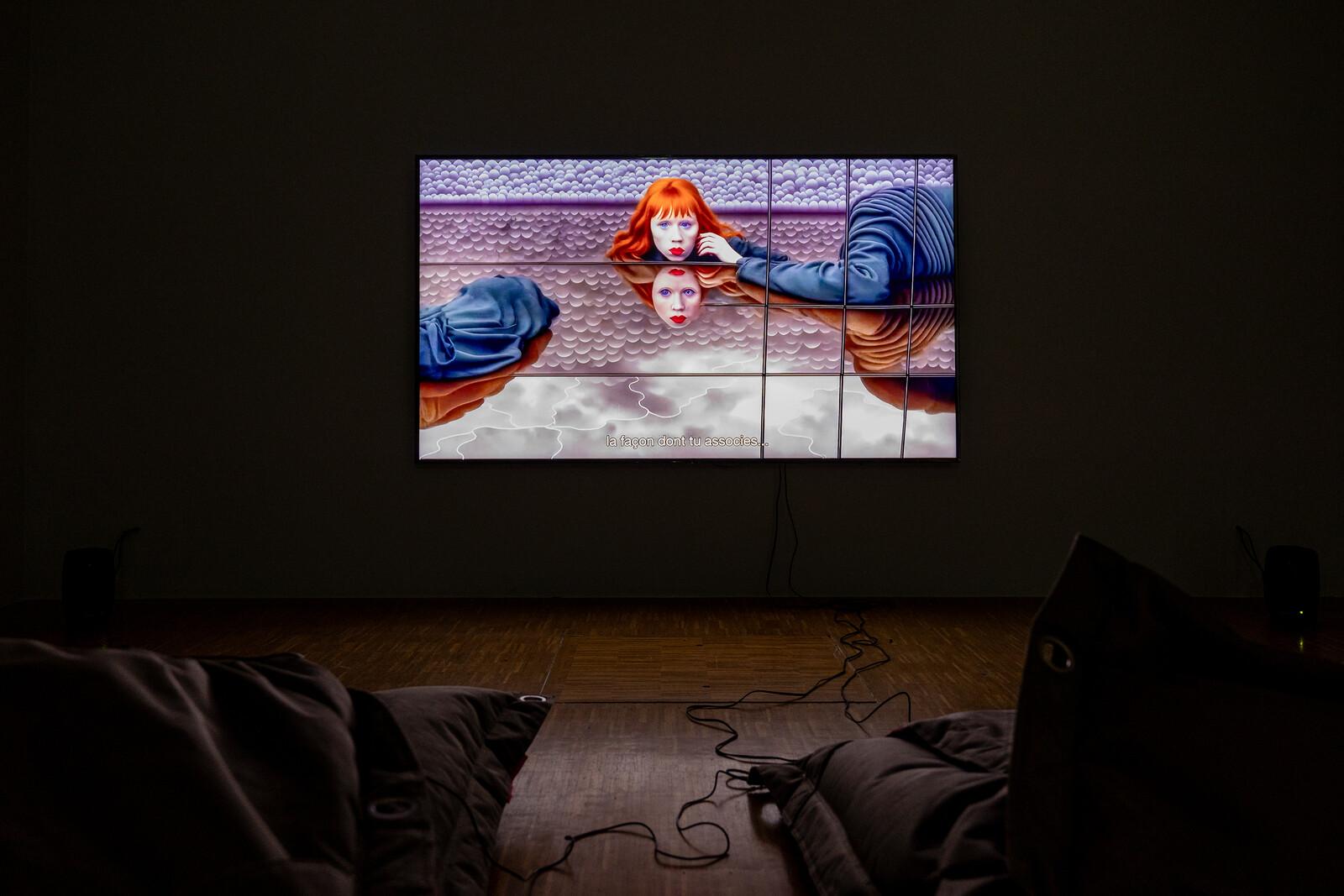Artists and Artificial Intelligence at Work
September 25, 2024–January 6, 2025
Place Georges-Pompidou
75004 Paris
France
Following the symposium The Future Isn’t What It Used to Be during the 2023 edition of Moviment at the Centre Pompidou, Apophenia, Interruptions: Artists and Artificial Intelligence at Work marks the second chapter of a three-year collaboration between KADIST and the Centre Pompidou. This exhibition explores the intersections between artistic creation and artificial intelligence through six artists’ installations, bringing together new commissions and recent productions.
Artists: Éric Baudelaire, Holly Herndon and Mat Dryhurst, Auriea Harvey, Ho Rui An, Interspecifics, Agnieszka Kurant
While generative AI promises to transform artistic research by offering new tools, it has also had a profound impact on the way we view images and works of art. The term “apophenia” was coined in 1958 to help diagnose schizophrenia and refers to a cognitive tendency to perceive meaningful links between disparate and unrelated elements, a disorder that can be compared to the “false connections” that appear as a result of the pattern-recognition processes at the heart of generative artificial intelligence. These aberrant processes, characterized by a need for algorithmic efficiency and flaws in the coherence of the source data, are seen here as a fertile starting point for artistic research.
With generative AI, neural networks transcend information analysis; they become creators in that they synthesize new images and texts combining patterns found in massive sets of data collected from across the Internet. However, as in the case of apophenia, distortions and biases frequently appear, giving rise to incorrect or distorted content known as “hallucinations”.
These inaccuracies are cause for concern, even if they are mitigated by human interventions into the processes via training, filtering, and labeling. And yet, the unpredictable results from these models are already in daily use by millions of people. The very fact of mass access to these powerful AI tools is what makes this moment so transformative and, consequently, invites artists to take up critical explorations. The aim is not only to reflect on the near-term effects of these new technologies, but also to imagine the various ways they have or will soon become “interruptions” in the processes and practices of contemporary life and work.
The exhibition sheds light on some of the implications of generative AI as it emerges from the shadows of the “black box”. The included artworks still focus primarily on the role of human intelligence, and the development and articulation of creative processes and conceptual frameworks, but have become entangled in these technologies, even going so far as to modify the AI systems themselves. Whether reflecting on collective memory as cataloged in national archives, an experimental investigation into the end (and AI-powered future) of grand narratives, a future projection of works of art not yet produced by an artist, the veil of a dreamworld filtered through AI as a way to recount an intimate experience, a conversation with an inhuman system about something inhumane, or the possible future of a transformed landmass, the works of art in the exhibition are invested with a vivid curiosity, putting to the test the ways in which these new technologies promise to radically transform our world.







